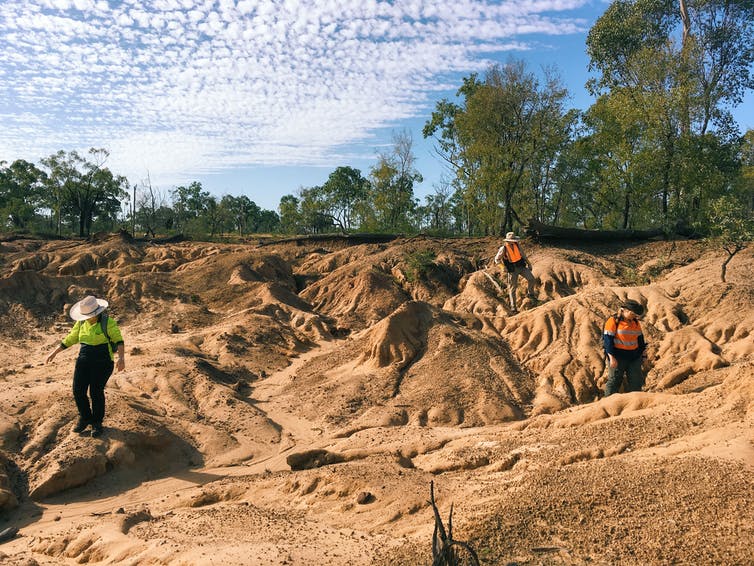BLOGS WEBSITE
TAG: megafauna
Study finds famous Australian caves are up to 500,000 years older than we thought – and it could help explain a megafauna mystery
South Australia’s Naracoorte Caves is one of the world’s best fossil sites, containing a record spanning more than half a million years. Among the remains preserved in layers of sand are the bones of many iconic Australian megafauna species that became extinct between 48,000 and 37,000 years ago. The reasons for the demise of these […]
Comments Off on Study finds famous Australian caves are up to 500,000 years older than we thought – and it could help explain a megafauna mystery
Humans coexisted with three-tonne marsupials and lizards as long as cars in ancient Australia
When people first arrived in what is now Queensland, they would have found the land inhabited by massive animals including goannas six metres long and kangaroos twice as tall as a human. A/Professor Lee Arnold has joined a national team to study fossil bones of these animals for the past decade. Their findings, published in Nature […]
Comments Off on Humans coexisted with three-tonne marsupials and lizards as long as cars in ancient Australia
Media Release: Megafaunal extinctions driven by too much moisture
Studies of bones from Ice Age megafaunal animals across Eurasia and the Americas have revealed that major increases in environmental moisture occurred just before many species suddenly became extinct around 11-15,000 years ago. The persistent moisture resulting from melting permafrost and glaciers caused widespread glacial-age grasslands to be rapidly replaced by peatlands and bogs, fragmenting […]
Comments Off on Media Release: Megafaunal extinctions driven by too much moisture
Our next gen “Attenborough” filming new doco
It’s not every day that a film crew shows up to showcase your latest scientific discovery, but for Liz Reed, that’s exactly what happened. A new documentary by The Discovery Channel is following research by Liz Reed, fellow at the Environment Institute. Reed, along with collaborators University of Adelaide and the University of New England, made sensational fossil […]
Comments Off on Our next gen “Attenborough” filming new doco
Podcast: Who Dun It? Us
Join Ewart Shaw from Radio Adelaide on his show Orbit, as he talks with the Environment Institute’s Dr Frederik Saltre. Dr Saltre takes us back to the days of the megafauna – those almost-mythical Australian creatures that were like up-scaled versions of kangaroos, wombats and emus. The evidence is stacking up that humans were the cause […]
Comments Off on Podcast: Who Dun It? Us
Media release: Climate not to blame for megafauna extinction in Australia
New research led by the University of Adelaide has found no relationship between sixteen megafauna extinctions in Australia and past climate change, suggesting humans were having negative impacts on the ecosystem as long as 55,000 years ago. In a paper published in the journal Nature Communications, Dr Frédérik Saltré, from the University of Adelaide’s Environment Institute, and colleagues […]
Comments Off on Media release: Climate not to blame for megafauna extinction in Australia




